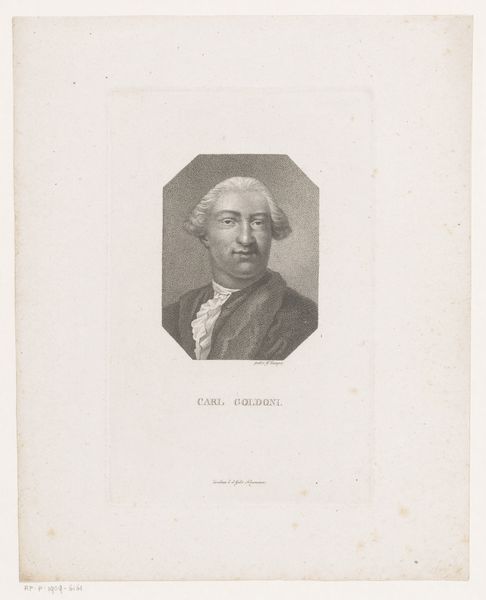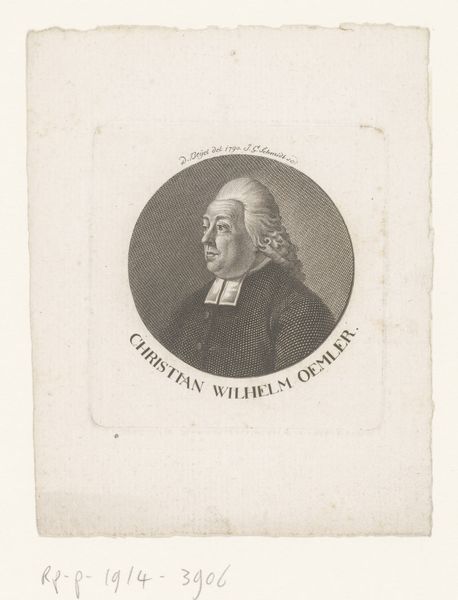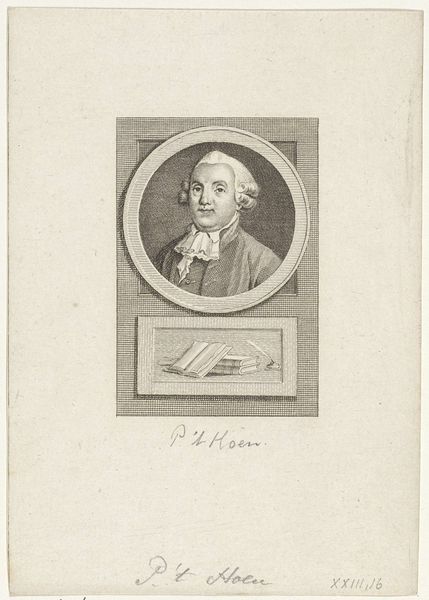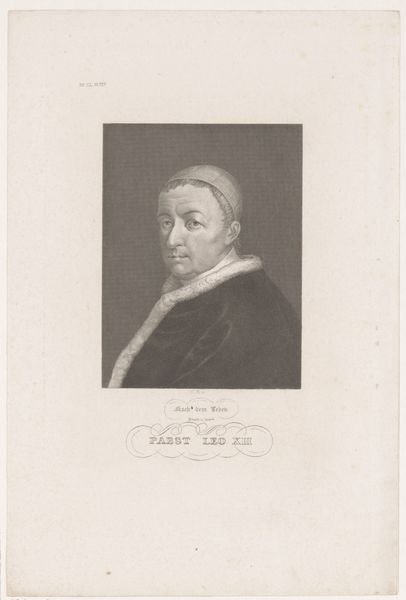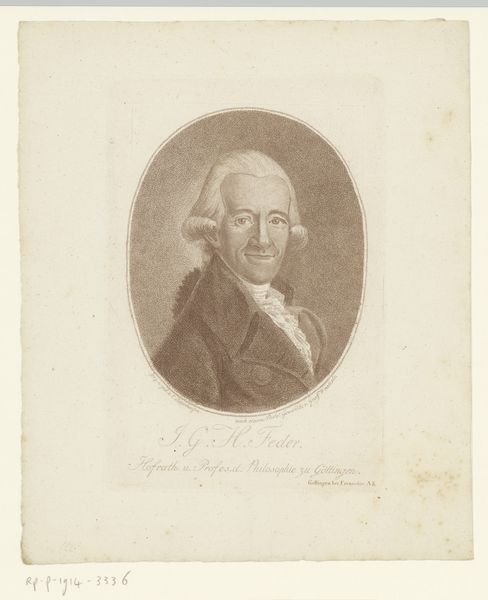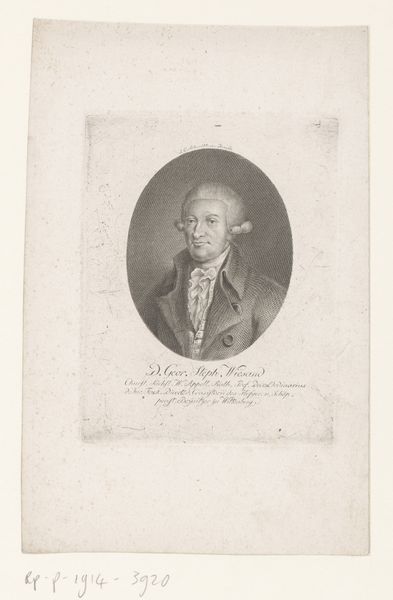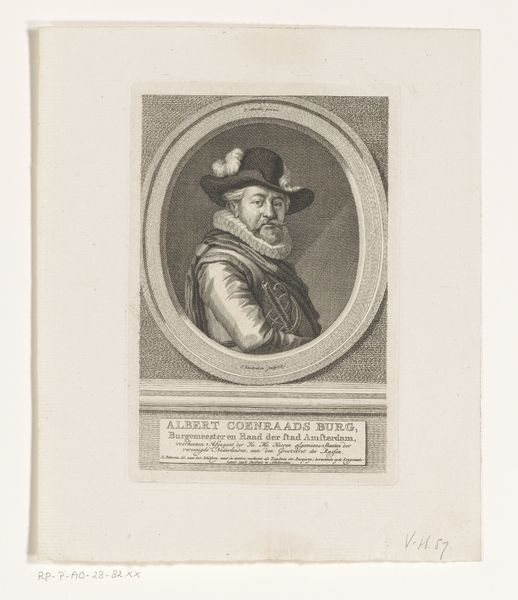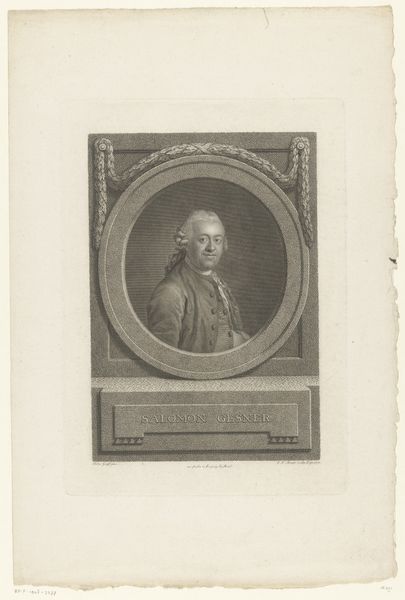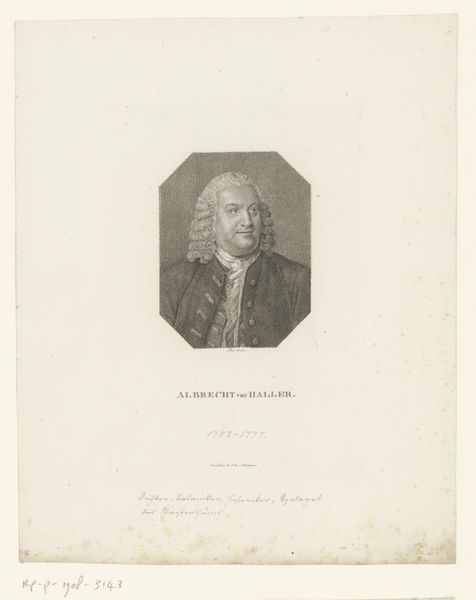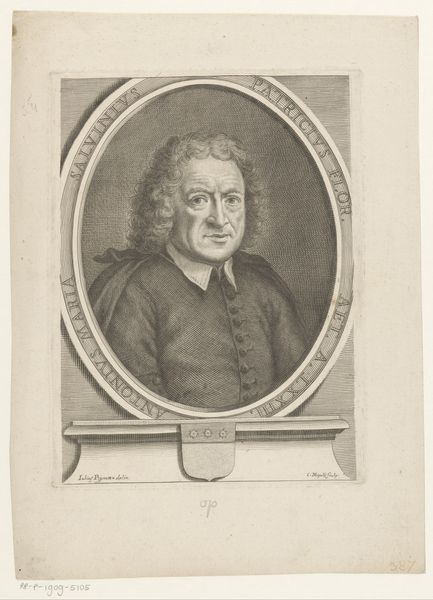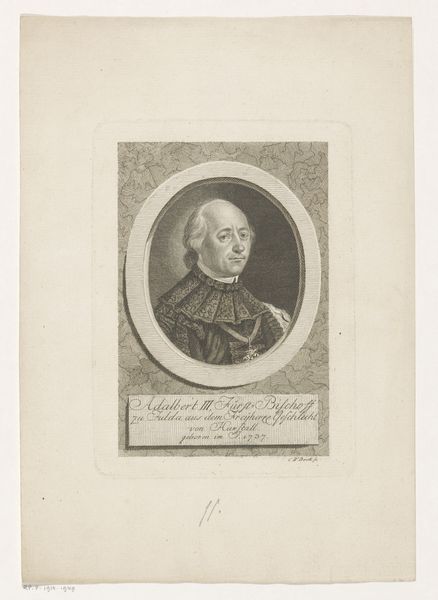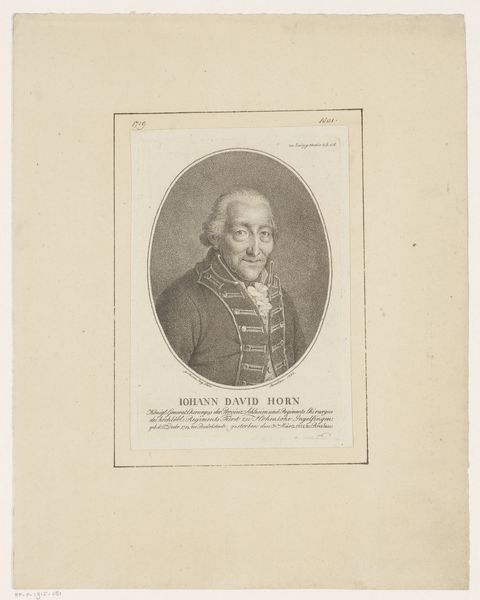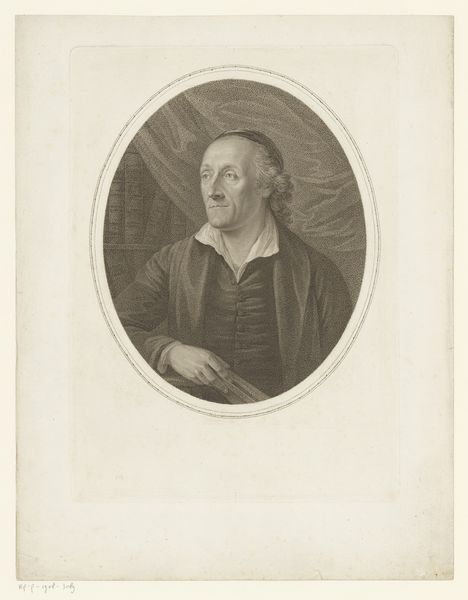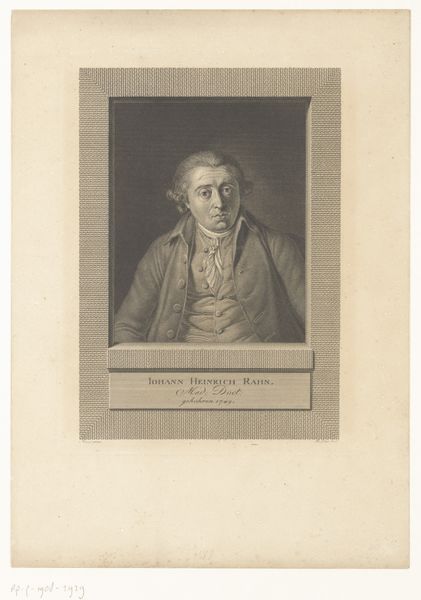
print, paper, engraving
#
portrait
#
neoclacissism
# print
#
paper
#
historical photography
#
pencil drawing
#
engraving
Dimensions: height 228 mm, width 168 mm
Copyright: Rijks Museum: Open Domain
Curator: Here we have a portrait of Christoph Martin Wieland, dating to sometime between 1801 and 1858. It was created by Moritz Steinla. Editor: My first impression is how delicate it seems, like a captured thought. The octagonal frame around Wieland gives it a contained, almost precious feel. Curator: Yes, the piece is an engraving, which immediately speaks to a reproductive intent, doesn’t it? It would have allowed for wide circulation, contributing to Wieland’s fame and philosophical reach, considering his impact on Enlightenment thought. Look at the texture achieved through the etching process, and the paper is a testament to early 19th-century printmaking. Editor: Absolutely, and consider the era: the late Enlightenment grappling with emergent Romanticism. This portrait isn’t just an image, it's an ideological artifact. It’s neoclassical in style, presenting Wieland as a rational, almost deified intellectual. But is it truly objective, or is it carefully constructing Wieland’s persona for a specific audience? Curator: That's key. The material conditions made such constructed imagery possible. We see how this print becomes a commodity, actively shaping the subject's reception in society, turning the philosophical Wieland into an accessible product. The engraver’s skill becomes inseparable from the cultural value assigned. Editor: And that act of 'commodifying' isn't innocent. The print participates in the creation of a celebrity intellectual, perhaps masking Wieland's actual views behind an easily digestible representation crafted through labour, printing, and widespread distribution. Consider, who was controlling these images, who could afford them, and whose version of Wieland were they consuming? Curator: The distribution of this piece meant that labor connected with its dissemination would further embed its meaning in everyday exchanges. This makes the 'print' of Wieland more than art – it becomes social and historical document that intersects in various political dialogues within larger networks. Editor: Precisely. Looking back, the image prompts consideration for access and accessibility, and power dynamics related to information control in Enlightenment era Europe. Curator: Seeing how process creates image, allows me a much better grasp on context. Thank you. Editor: It seems understanding that exchange transforms image viewing into a crucial exercise, for everyone.
Comments
No comments
Be the first to comment and join the conversation on the ultimate creative platform.
